CABRILLO & LA JOLLA (Day 8 - part 3)
We continued walking along the path along the top of the hill...

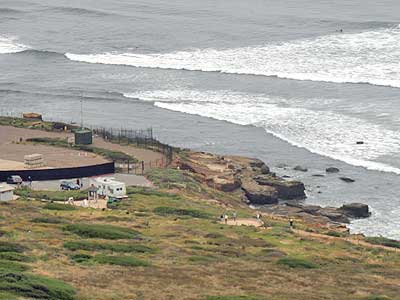
Below us were some tide pools and the start of the Coast Trail.


The submarine continues its journey.
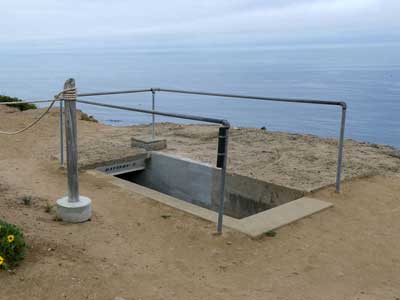

Coastal artillery control station (1943 - 46). No guns were ever placed inside this bunker.






The trail continued, eventually leading us to the old lighthouse.


Weather recording device ... A curious bird


The Point Loma Lighthouse (1855 - 1891) was San Diego's first lighthouse (and one of the first 8 lighthouses on the Pacific Coast). Its light could be seen as far as 39 miles away. Unfortunately it stood some 400 feet above sea level... so high that fog and low clouds often made it difficult to see. A new lighthouse was built at a lower elevation in 1891.
In 2004, the National Park Service completed restoration of the grounds to resemble its historic appearance.
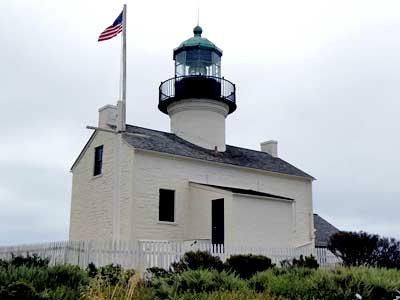



(right) Click for a larger view
We were allowed inside:

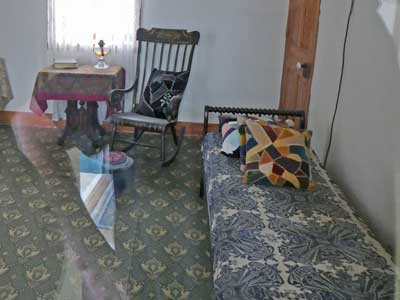
The parlor
The Victorian parlor was traditionally used only to entertain visitors, but since the lighthouse was so isolated, it received few visitors. As such, it was also used as the keeper's office. An inspector visited quarterly to deliver fuel, food, tools and books. Mobile libraries, each with about 50 books, rotated between lighthouses.

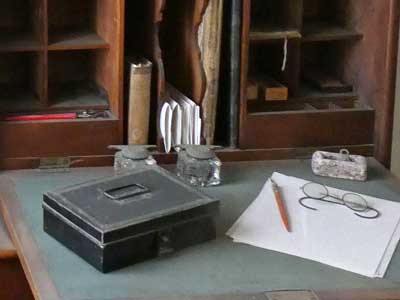


The kitchen
Like most homes of the mid-1800s, family life at the lighthouse revolved around the kitchen. Food was prepared, served and canned here. Family members might read aloud from a book or newspaper to the others, or perhaps small chores might be done such as darning socks, ironing laundry or cleaning oil lamps.

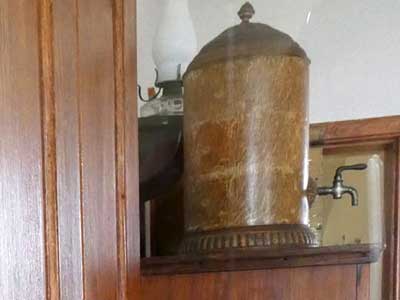
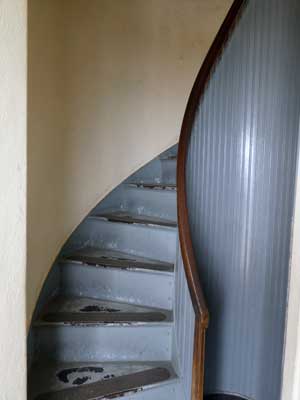

Heading upstairs


Children's bedroom
The keeper's children shared a bedroom. After their chores and schoolwork were completed, they could play outside, collecting shells or reading books.



The keeper's bedroom
The keeper tended the light from dusk to midnight while an assistant keeper tended it from midnight to dawn.


We could climb the ladder for a peek at the lantern.


Heading back downstairs
There was also an exhibit room:


Since ancient times, bonfires, braziers (fires in buckets) and lighthouses have guided and provided safe passage for mariners by identifying port entrances and helping ships avoid dangerous reefs and sandbars. Before electric lamps, people used wood, coal, sperm whale oil, lard, rapeseed oil and kerosene to fuel lighthouse lamps.


Augustin Jean Fresnel (1788 - 1827) revolutionized lens optics through his understanding of how light behaves and can be manipulated and amplified. A Fresnel (pronounced Fray-nel) lighthouse lens used glass prisms to magnify and focus light from a single source into a horizontal sheet projected in all directions for great distances.


A light in regular glass and in a Fresnel one for comparison ... Lenses are classified by focal distance (the distance from the light source to the inside surface of the lens) into seven orders.


Although they vary greatly in appearance, a lighthouse is essentially a bright light on top of a tower. A lamp sits inside a lens which sits inside a protective top. The lens may be fixed (non-rotating) or flashing (rotating). Originally they were turned by clockwork and weights (today they're driven by electric motors). They are now mostly automated so a live-in keeper is no longer necessary.
return • continue